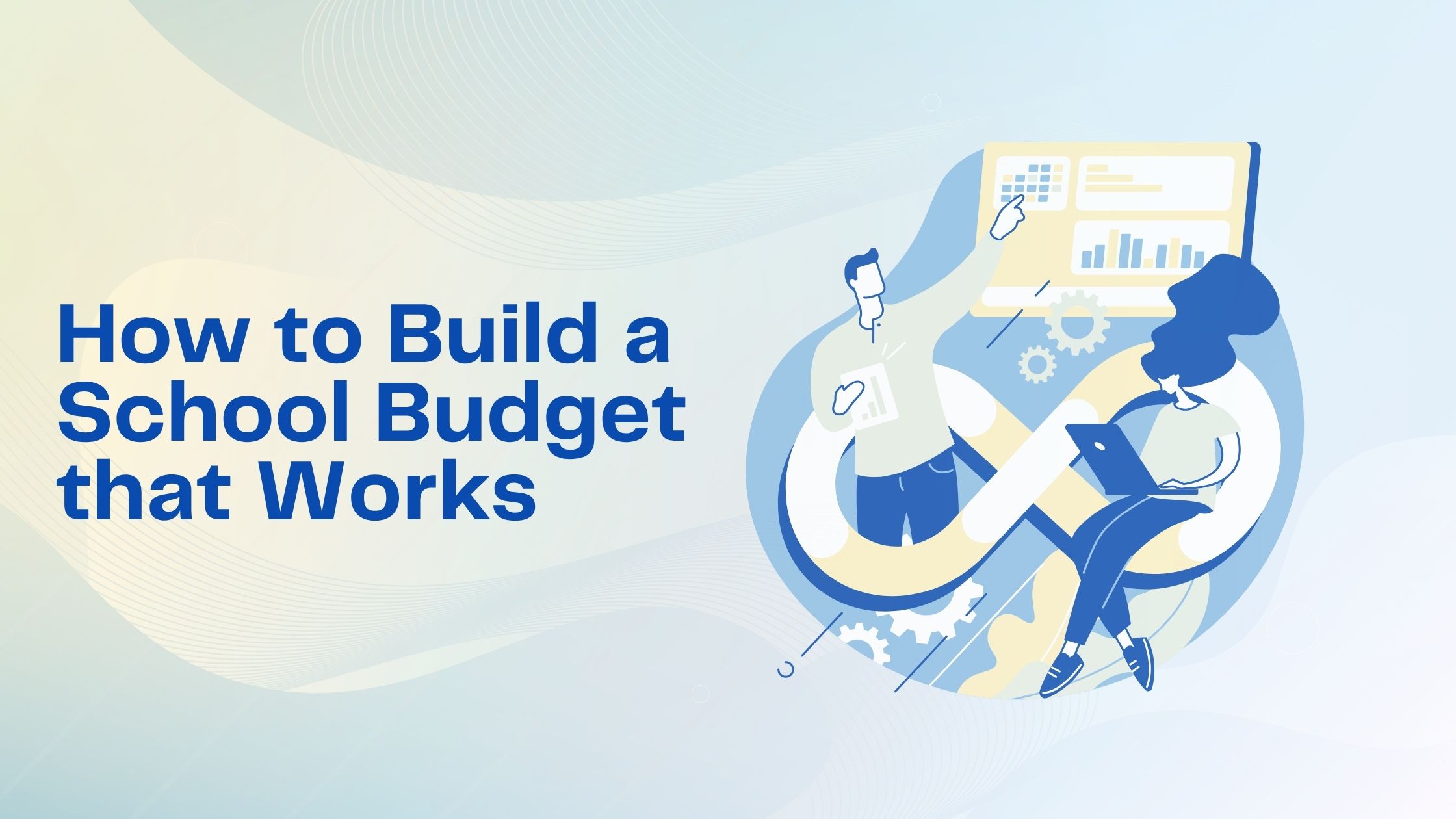Why School Budgets Matter
Running a school isn’t just about teaching — it’s also about managing money wisely. A good school budget ensures that the institution can deliver quality education without running into financial trouble. Whether you’re managing a small private nursery or a large secondary school, budgeting isn’t optional. It’s the backbone of sustainable school growth.
Many school owners in Nigeria and across Africa struggle with budgeting. Expenses sneak up unexpectedly, income projections fall short, and there’s never “enough” for staff, maintenance, or expansion. But a budget isn’t meant to solve all your financial problems — it’s meant to give you control. With a well-planned budget, you don’t just survive the term — you grow.
In this article, we’ll walk you through the step-by-step process of building a school budget that actually works — realistic, flexible, and tailored to your school’s vision.

1. Start With Your Income Sources
Your budget should always begin with what’s coming in — not what’s going out. These are the core sources of income for most schools:
- Tuition fees
- Registration and admission fees
- Grants or donations (e.g. from NGOs, religious bodies)
- Government subventions (if applicable)
- School-related services like transport, canteen, hostel, and after-school programs
Pro tip: If your income is seasonal (like term-based), break it down monthly. Don’t assume all parents will pay in full — include estimates for late or partial payments.
Use conservative estimates for income. Don’t budget based on best-case scenarios — plan with what is guaranteed, not what you’re hoping for.
2. Map Out Your Fixed Costs First
Once you’ve figured out your income, it’s time to lay out the unavoidable expenses — the ones that don’t change much whether you have 50 students or 500.
Some typical fixed costs include:
- Staff salaries (teachers, cleaners, security, admin)
- Rent or mortgage
- Utility bills (electricity, water, internet)
- Insurance
- Licenses or regulatory fees
- Software subscriptions or digital tools
These costs should take top priority — if you can’t cover them, your school can’t run.
3. Track Your Variable Costs
Next, identify the variable costs — expenses that may rise or fall depending on the number of students or specific term activities.
Examples:
- Learning materials (books, stationery)
- Exam costs
- Excursions or school trips
- Event expenses (graduation, sports day, cultural day)
- Repairs and maintenance
- Marketing and promotions
Be honest with these figures. Review past school terms and average the spend — then add a little buffer (e.g., 10%) for inflation or surprises.
4. Plan for Strategic Savings and Emergency Funds
One common budgeting mistake school owners make is failing to include savings or reserves in their financial plan. A working school budget isn’t just about spending — it’s about protecting your school from future risk.
Here’s how to include smart reserves:
- Emergency fund: Save at least 5–10% of your total term income for unexpected events (e.g., equipment breakdown, regulatory fines, or drop in enrollment).
- Growth fund: Allocate a portion toward expansion — e.g., buying new computers, building a lab, or upgrading classrooms.
- Staff development: Set aside funds for teacher training or certification. Your school is only as good as your staff.
Tip: Label these reserve accounts clearly and avoid dipping into them unless absolutely necessary.
5. Use a Budgeting Template or Tool
Don’t try to build your school budget on scattered notes or memory. Use templates or digital tools that can help you track income, expenses, and balances automatically.
Here are a few tools to consider:
- Excel or Google Sheets: Great for simple custom budgeting. You can use formulas to calculate totals and balances.
- QuickBooks or Zoho Books: If your school handles higher volumes of finance, these apps offer automated tracking, invoicing, and reports.
- Trello or Notion: While not budgeting tools per se, they help organize budget-related tasks or timelines.
- School Management Software: Some platforms have built-in finance modules, which sync with your student database and fee payments.
Most important: keep your budget visible and updated. Print it out. Pin it in your admin office. Review it every month.
6. Avoid These Common Budgeting Pitfalls
Here are frequent mistakes school owners make — and how to avoid them:
- Overestimating income: Always use conservative figures when projecting income. Hope for the best but plan for the worst.
- Ignoring small expenses: That N5,000 printer ink, N10,000 website renewal, or staff lunch package adds up fast. Track everything.
- Not separating personal and school finances: Your salary as school owner should be clearly budgeted — not mixed with operational cash.
- No mid-term review: A budget created in January can’t serve you well in July unless it’s reviewed and adjusted.
7. Involve Your Team in the Process
Budgeting should not be done in isolation. Involve your:
- Bursar or accountant to handle numbers accurately
- Admin staff to flag hidden costs
- Heads of department to estimate teaching needs
- External consultants if you want to build long-term financial systems
This not only ensures accuracy but builds financial accountability across your leadership team.
8. Present and Get Approval for Your Budget
Once your school budget draft is ready, it’s important to present it clearly — whether to your board, investors, partners, or leadership team. A strong presentation builds trust and invites collaboration.
What to include in your budget presentation:
- Overview of income and expenses
- Key changes from the previous term/year
- Justifications for major costs (e.g. new hires, facility upgrades)
- Savings plan and reserve funds
- Areas of potential surplus or risk
Keep it clear, visual, and simple. Use bar charts or pie graphs to show percentage splits. And remember: a well-communicated budget earns you support.
9. Budget Templates You Can Use (Optional)
To get started, you can build your own budget or customize templates like:
- Free School Budget Template (Google Sheets)
- Education Budget Planner by Smartsheet
- Custom Excel templates using categories like:
- Income (Tuition, Donations, Grants, Sales)
- Expenses (Salaries, Utilities, Repairs, Marketing, Supplies)
If you’re part of a program like the School Management Institute (SMI), templates are often provided based on your cohort’s needs.
10. Final Thoughts: Budgeting is Leadership
A school that manages its money well, manages everything else better.
Your budget reflects your priorities, vision, and leadership. Whether you’re running a small nursery school or a multi-campus institution, a working budget will:
- Help you survive low seasons
- Position you for funding opportunities
- Create long-term sustainability
- Empower you to pay and retain great staff
- Give parents and partners confidence
Don’t wing it. Budget it.
Start small, keep it consistent, and review it often. When in doubt, consult a mentor or accountant who understands the education sector.



